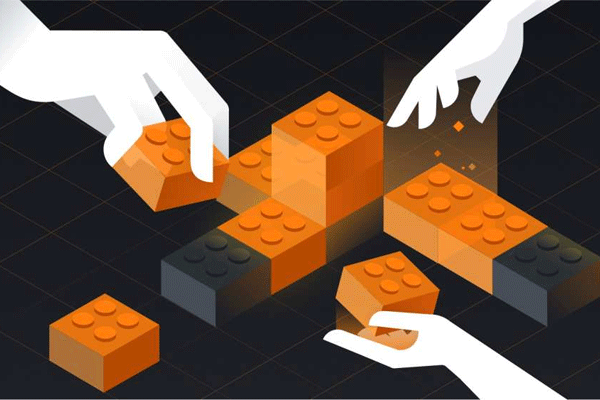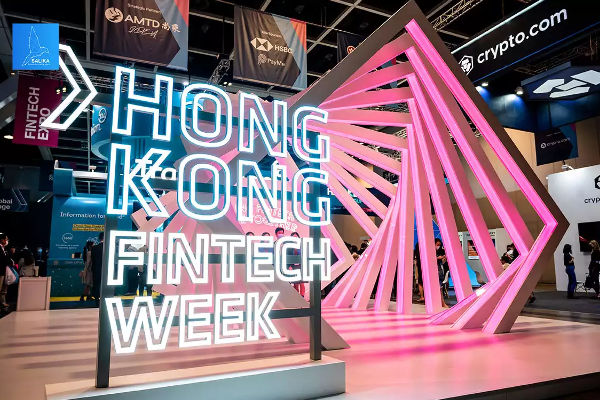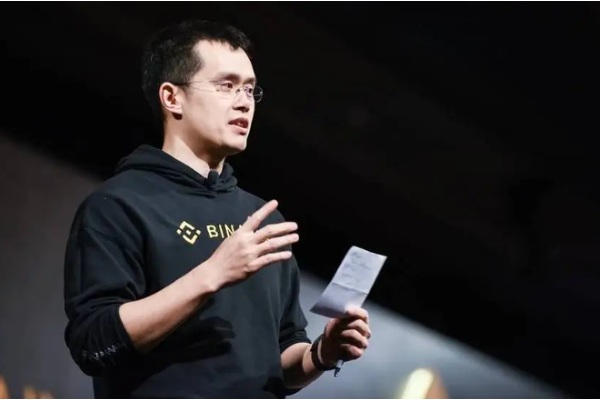A review of 18 major L1 communities: Who has the strongest consensus?

Belief, Action, Resilience, Density, or BARD, is a method I proposed in my previous article, What the Hell Is Community?, to measure the health and strength of crypto communities. In a market where hype often obscures reality, BARD focuses on what really holds crypto ecosystems together: Belief (referring to firm beliefs and ideas), Action (activeness of real builders or users), Resilience (ability to withstand market fluctuations and setbacks), and Density (network cohesion and social relevance).
In this post, I’ll have ChatGPT use the BARD model to analyze 18 leading cryptocurrency communities in 2024-2025: Bitcoin, Ethereum, Solana, Ripple, Cardano, Dogecoin, Movement, Tron, Ton, Aptos, Avax, Cosmos, BNB Chain, Berachain, Stacks, Polkadot, EOS, and Hyperliquid. Each project will be scored 1-10 on each dimension.
Without further ado, here are the rankings.
BARD Score Overview
Below is a summary table of BARD scores for each blockchain project. These scores are based on current (2024-2025) ecosystem performance: staking and retention rates, developer and governance participation, cultural memes, social activity, and community response to recent market volatility.
Analysis of major Layer 1 blockchain communities
Ethereum (36 / 40): “Infinite roadmap, endless delays”
The Ethereum community is a unique blend of idealism and pragmatism. It unites builders, speculators, and idealists under an ambitious, diverse and inclusive philosophy that advocates decentralization, innovation, and the public good. Although recent governance tensions within the Ethereum Foundation have slightly blurred its mission clarity, Ethereum remains the unrivaled development center in crypto, with the highest builder activity and deeply engaged social network in the world. In short, the Ethereum community has a rare combination of firm belief in its principles, continued action, and tested resilience, making it the most dynamic network giant in crypto.
Bitcoin (35 / 40): “Fanatical digital gold worshippers with no sense of calm”
The Bitcoin community is a mainstay in the crypto space, fueled by a near-religious belief in decentralization and sound money. While builders are slow to act, their strengths lie in their convictions and resilience: Bitcoin maximalists hold firm in the face of regulatory storms and bear markets. They may not be quick to roll out new features, but in terms of conviction and staying power, Bitcoin is the pinnacle of the community.
Solana (34 / 40): “FTX PTSD Survivors Club”
The Solana community embodies tenacity and relentless action. After the FTX crash, network outages, and brutal market shakeouts, Solana’s loyalists have bounced back stronger than ever with a pragmatic belief in its technology and scalability. Today, it has once again become a developer hotspot, leading a wave of new developers and a surge in trading volume in 2024.
Solana’s core community is vibrant, tight-knit, and highly self-identified, tied together by shared struggles and network memes. While slightly less ideologically cohesive than Bitcoin and Ethereum, Solana’s gritty, counterattack-driven culture makes it a community characterized by action, resilience, and renewed ambition.
Ripple (33 / 40): “Banker’s Token with a Victim Complex”
The XRP Army is one of the most battle-hardened and loyal groups in crypto, united by their belief that Ripple will revolutionize global finance. While grassroots developers have limited action, their strength lies in their extraordinary resilience, having weathered regulatory battles, negative news, and bear markets over the years without losing their faith. They may not produce much code, but their strong convictions and unparalleled ability to withstand adversity ensure that the Ripple community remains a lasting and powerful force in crypto.
Cardano (31 / 40): “Peer-reviewed ghost chain”
For patience, solidarity, and sheer ideological conviction, the Cardano community is unmatched in crypto. ADA holders are extremely loyal, with over 60% of the total supply used for staking.
While the developer ecosystem still lags behind more dynamic competitors, Cardano’s social network (which calls itself the “Cardano family”) is tight, active, and cohesive. Their unwavering belief and resilience have enabled the network to thrive amid skepticism, and community culture has become Cardano’s strongest long-term advantage.
Polkadot (31 / 40): "Gavin's Over-engineered Dream"
The Polkadot community sets high standards for decentralization, governance participation, and long-term builder action. Led by founder Gavin Wood's Web3 vision, Polkadot's faithful believe in a multi-chain future built on interoperability and transparency.
While the hype has faded in recent cycles, the community has shown admirable resilience, patiently dealing with development delays and smoothly adapting to major governance changes. Polkadot's community culture connects different parachain groups and remains cohesive and vibrant.
Berachain (29 / 40): "Honey-driven DeFi speculation frenzy"
The Berachain community challenges crypto logic: even before the mainnet was launched, fans were extremely loyal, closely connected by network memes, jokes, and the prospects of innovative DeFi mechanisms. Their beliefs have withstood multiple delays, locked $3.1 billion in liquidity in the pre-launch phase, and hyped up X (Twitter) and Discord.
Activity surged after the mainnet went live in February 2025, but it’s still in its early, speculative stages. While true resilience has yet to be stress-tested, the tight-knit, meme-driven culture creates an unusually tight social and economic cohesion. It’s small but incredibly cohesive; proving that sometimes, belief alone can build a strong community from scratch.
Dogecoin (29 / 40): “Crypto’s Favorite Bad Joke”
The Dogecoin community proves that online memes are more powerful than code. Based on pure, playful belief and humor, the Dogecoin army turned a joke into a lasting crypto phenomenon. Despite extremely low developer activity and scarce technical innovation, Dogecoin holders have shown extraordinary cultural resilience, rekindling their enthusiasm time and again through viral waves and celebrity hype (such as Elon Musk’s help).
Although the Dogecoin community is not closely connected by technology or governance, holders have established close social bonds through shared jokes and outsider status. Its strength lies not in what it builds, but in its continued positivity, sense of absurdity, and durability.
Avalanche (29 / 40): "Finding the Red Triangle of Narrative"
The Avalanche community is pragmatic and builder-oriented, closely linked by a shared belief in its technology (fast consensus, customizable subnets). Although not strongly ideological, they have demonstrated sustained developer activity and healthy ecosystem engagement, launching numerous subnets and maintaining stable trading activity.
Although it has not yet experienced a severe test of resilience, the Avalanche community has quietly persevered during the market downturn without losing core contributors, showing steady perseverance. Community members are socially connected, but with a slightly top-down management style, maintaining cohesion between developers and validators, but grassroots participation needs to be strengthened.
BNB Chain (28 / 40): "Changpeng Zhao's Clone Factory"
The BNB Chain community has built a large but loosely connected ecosystem by leveraging the loyalty of a large number of retail investors to Binance (or Changpeng Zhao). The belief revolves around trust in Binance's mature products rather than ideological persistence. Action is reflected in high transaction volume, but heavy reliance on cloned decentralized applications (dapps) and yield-seeking speculation. Despite showing amazing resilience in the face of hacks and regulatory pressure, the community is more focused on practicality than purity.
However, widespread user adoption is accompanied by weak social ties; most cohesion comes from the corporate umbrella of Binance rather than an organically grown culture. BNB Chain has succeeded on scale and convenience, and its community lacks deeper ideological unity or grassroots cohesion.
Cosmos (28 / 40): "Clash of Blockchains: IBC"
Cosmos is the "Internet of Blockchains" in the crypto space, driven by powerful ideas around sovereignty and interoperability. The Cosmos community remains a gathering place for prolific application chain developers and enthusiastic builders. Despite showing resilience in the face of many major challenges (including the Terra collapse, fierce token economics debates, and Jae Kwon's controversial AtomOne fork), Cosmos is facing increasing internal fragmentation. The team and validators have split into competing factions. Ultimately, Cosmos’ core strength remains its decentralized builder culture, but the current state of division portends a severe test for community coordination and unity in the future.
Ton (27 / 40): “Telegram’s Zombie Chain”
The TON community rose from the ashes of Telegram’s abandoned blockchain, sustained by early loyal supporters. With Telegram’s re-adoption of TON and deep integration, the community’s belief in its mission to achieve mass crypto adoption through Telegram’s 95 million users has soared. Although recent hackathons and foundation-driven initiatives have boosted developer activity, grassroots action is still slow to grow.
TON’s resilience in dealing with legal woes is commendable, but overall community density remains medium; closely connected within the core group associated with Telegram, but lacking broader, decentralized participation.
Tron (26 / 40): “Sun’s Stablecoin Casino”
The Tron community is large but utilitarian, focused on tangible network benefits: fast, cheap transactions, and real-world use cases such as stablecoin transfers and gambling-based decentralized applications. Despite Sun’s controversy, the community remains resilient, showing steady growth and significant daily transaction volume.
Developer creativity is limited, and most activities are driven by the Tron Foundation, mostly simple DeFi clones. Socially, Tron’s large user base is relatively fragmented and lacks close ties between members, making it more like a silent giant in the field of blockchain practicality than a tightly knit cultural force.
Stacks (25 / 40): “The ignored little brother of the Bitcoin community”
The Stacks community builds a bridge between Bitcoin’s maximalism and smart contract innovation, and always believes that Bitcoin can go beyond the scope of digital gold. Although small and somewhat isolated from the broader Bitcoin community, their dedication to mission-driven development has forged a certain resilience. However, limited growth or visibility in the broader crypto space has made the Stacks community a tight-knit but niche community.
Hyperliquid (24 / 40): “Jeff’s on-chain casino cult”
Hyperliquid is a newcomer to our list. The Hyperliquid community is centered around a compelling idea, “Binance on-chain,” uniting traders under a niche but passionate mission to pursue high-performance decentralized trading. Driven by community-centric token economics (70% of tokens are allocated to users, and proceeds are redistributed), early adopters have demonstrated strong, almost fanatical conviction. However, activity is primarily focused on the trading space, rather than broad development or governance.
Resilience Promising but untested; Hyperliquid has not faced significant adversity or regulatory scrutiny. Community ties are tight within a core group of traders, but weak outside of this group. Overall, Hyperliquid’s focused user base puts it on track to become a niche powerhouse.
Aptos (23 / 40): “One K-pop hit doesn’t make a thriving chain”
Aptos launched with huge hype and venture capital backing, but the shine has faded. Early conviction was mostly speculatively driven, with many joining for airdrops rather than genuine endorsements. By 2025, the community is more grounded, with real builders, active regional groups, and a growing ecosystem in DeFi, NFTs, and real-world assets (RWAs). Still, the recent departures of co-founder Mo Shaikh and ecosystem head Neil have exposed cracks in the team. Developer growth is strong, but much activity is still driven from the top down. Resilience has been tested through market downturns and internal changes without a major collapse. Aptos has the infrastructure, traction, and global reach, but still lacks cultural “glue.”
Movement (16 / 40): "No one cares about the Move chain"
Movement is an ambitious but embryonic Layer 1 ecosystem that aims to build a modular Move language Rollup network based on Ethereum. Its early community is mostly driven by curiosity and speculative interest, and has not yet formed deep conviction or widespread recognition.
To date, on-chain activity has been extremely limited, mainly developer experimentation and staking, and true ecosystem traction has yet to be achieved. The rapid and transparent response to the early liquidity crisis hinted at potential resilience, but greater tests are still ahead. The lack of a distinct culture or close interpersonal relationships makes the Movement community currently just a concept that needs to prove itself through adoption and continued development.
EOS (8 / 40): "The $4 billion ghost chain that self-destructed"
EOS raised $4.1 billion in 2018 and promised to change the world. But it broke its promise. Over-hyped and under-delivered, developers churned out, users left in droves, and gradually disappeared from people's sight. The original community collapsed, and so did confidence in EOS as a platform. Today, a small group of die-hard fans run the EOS Network Foundation (ENF), attempting to save the project through upgrades and rebranding. Their perseverance is admirable, but they are rebuilding on the ashes. Developer activity is minimal, users are few and far between, and even Tether has stopped minting USDT on EOS.
EOS is not completely dead yet, but it is undoubtedly in danger. The EOS story is a cautionary tale: without sustained belief, action, and cultural resilience, even billions of dollars cannot buy a lasting community.
Conclusion
It is clear from this experiment that early-stage communities tend to score lower on the BARD model, especially in terms of action and resilience. This is normal: new projects often rely on top-down construction, have fewer bottom-up contributors, and have not yet experienced adversity. Therefore, it may be premature to dismiss their potential just because they have not had a chance to prove themselves.
At the same time, once a community has withstood a real stress test or multiple market cycles, conviction and density typically deepen. Grassroots movements, meme culture, and strong social networks rarely happen overnight. With this in mind, the BARD model could be improved by taking a “stage-aware” approach, giving different weights to newly launched chains on certain dimensions (such as resilience), and distinguishing between top-down construction and true bottom-up participation in terms of action scores.
Another dimension is cross-project synergies. In ecosystems like Cosmos or Polkadot, communities span multiple interconnected networks; this can have a significant impact on density (and sometimes resilience), forming a meta-community that might be overlooked if each chain is viewed in isolation.
Finally, the BARD model could incorporate more qualitative measures, such as developer tools, offline meetups, or user-initiated initiatives, to ensure that the noise brought on by hype does not inflate the score.
All in all, the value of the BARD model lies in asking more pointed questions about what actually drives the enduring development of a community. Even in a market filled with short-term attention spans, hype cycles, and fierce competition, some ecosystems continue to demonstrate enduring conviction, real construction, and strong social networks. Identifying and measuring these rare traits may be the best way to preserve the community spirit that originally drove cryptocurrency.









